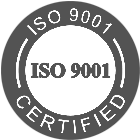You step into a modern office building for an important meeting. At the reception, there’s no need for paper sign-ins or waiting around to be announced. Instead, a streamlined digital system greets you, notifies your host instantly, and promptly directs you to your destination. This is the efficiency and elegance of modern guest management at work.
In a world where first impressions hold incredible weight, how visitors are welcomed and managed can shape relationships, boost productivity, and enhance security. Guest management (also called visitor management) has evolved into a cornerstone of contemporary workplace operations.
But what exactly does office guest management entail, and how is it transforming the way we interact with visitors in professional settings? Let’s find out.

TL;DR:
-
Guest management involves creating a seamless, secure, and positive experience for every visitor in a workplace.
-
Modern visitor management systems use digital tools like check-in apps, automated host notifications, and access controls.
-
Balancing security and convenience is crucial for delivering a safe yet welcoming guest experience.
-
Future innovations in visitor management include AI, contactless technologies, and smart building integrations.
What Is Guest Management?
Guest management, also known as visitor management, involves overseeing and enhancing every aspect of a visitor's experience within a workplace or facility. It's a comprehensive approach beyond simply signing in at a reception desk. At its core, guest management is about creating a seamless, secure, and positive experience for anyone who steps into your organization – clients, job candidates, contractors, or delivery personnel.
This process encompasses everything from pre-arrival communication and check-in procedures to on-site navigation, host notification, and check-out protocols. Effective guest management ensures that visitors feel welcome, informed, and valued throughout their stay while maintaining the workplace's security and efficiency.
In today's digital age, guest management has evolved to incorporate cutting-edge technologies. Modern systems often include features like digital check-in kiosks, mobile apps for visitor registration, automated host notifications, access control, and digital logs for visitor information. These tools streamline the visitor experience and provide valuable data and insights for organizations to continually improve their operations.
Guest management is not just about impressing visitors; it's critical for staying in line with safety regulations and maintaining compliance. Organizations can better protect their assets, employees, and sensitive information by keeping accurate records of who enters and exits the premises in multiple locations. This is particularly important in industries with strict regulatory requirements or in high-security environments.
Moreover, guest management plays a crucial role in emergencies. In the event of an evacuation, for instance, a robust visitor management system can quickly account for all visitors on-site, ensuring everyone's safety. This level of preparedness and control is invaluable in today's unpredictable world.

Critical Challenges in Modern Guest Management
As organizations strive to perfect their guest management strategies, they often encounter several hurdles. Let's explore the most common challenges modern workplaces face when managing office guest traffic.
Balancing Security and Convenience
One of the most significant challenges in guest management is striking the right balance between security and convenience. On one hand, businesses need to protect their premises, employees, and sensitive information. On the other, they want to create a welcoming environment that doesn't feel like a fortress.
Implementing stringent security measures can sometimes lead to a cumbersome visitor screening process, potentially frustrating guests and creating a negative first impression. Conversely, an overly relaxed approach to guest management might compromise security and adherence to compliance requirements. The key lies in finding innovative visitor management technology that enhance security without sacrificing the guest experience.
Managing Unexpected Guests
While many visitors can be anticipated and prepared for, unexpected guests pose a unique challenge to the front desk and security staff. Walk-ins, last-minute meetings, or surprise visits from important clients can throw a wrench in even the most well-oiled guest management processes.
Dealing with unexpected visitors requires flexibility and quick thinking. Reception staff need to be trained to handle these situations gracefully, and visitor management systems should be adaptable enough to accommodate unplanned arrivals without compromising security or efficiency.
Scalability for High Guest Volumes
As businesses grow or host large events, the ability to handle high volumes of guests becomes crucial. Traditional guest management methods often buckle under the pressure of numerous simultaneous check-ins, leading to long queues and frustrated visitors.
Scalable visitor management systems are essential for businesses that experience fluctuating visitor traffic. Whether it's a regular day or a bustling conference, the system should be able to handle the influx without compromising on speed or security.
Customizing for Diverse Guest Needs
Not all guests are equal, and a one-size-fits-all approach to guest management often fails. Different types of visitors—from VIP clients to delivery personnel—may require unique visitor management processes, access levels, host invites, and even custom branding.
The challenge lies in creating a guest management system that's flexible enough to cater to these diverse needs while maintaining consistency and efficiency. This might involve developing customizable guest registration workflows, multi-language support, or special accommodations for guests with disabilities.
Real-Time Communication with Hosts
In many organizations, the final step of the guest management process—connecting visitors with their hosts—can be the most problematic. Delays in notifying hosts about their guests' arrival can leave visitors waiting, creating an unprofessional impression.
Implementing a reliable, real-time communication system between the admin staff and hosts is crucial. This system must work across various devices and integrate seamlessly with employees' existing communication tools (for example, Microsoft Teams) to ensure prompt responses and minimize wait times.

Best Practices for Elevating the Guest Experience in the Office
Originally rooted in the hospitality industry, guest management has principles that easily translate to office settings. By prioritizing a warm welcome, coupled with efficiency and personalization, workplaces can redefine how they host and interact with visitors.
Embrace Digital Solutions
Modern offices should consider implementing digital solutions for managing guests. This could include online pre-registration forms, digital check-in kiosks, or visitor mobile apps. These tools can streamline check-in and reduce wait times when guests arrive, creating a more positive first impression.
Personalize the Guest Experience
Personalization plays a crucial role in guest satisfaction. In the hospitality industry, customers who rate the level of personalization 9 or 10 on a scale of 0 to 10 are significantly more likely to report high overall satisfaction. Applying this principle to an office setting can yield similar benefits. This might involve greeting guests by name, recalling their preferences from prior visits, or customizing their experience based on the purpose of their visit—all of which contribute to a more positive and memorable interaction.
Make Data-Driven Decisions
Use visitor records and export visitor data to gain valuable insights into your guest management process. Analyze trends such as peak visitor times, repeat visits, and average check-in durations to identify areas for improvement. This data can help you optimize staff scheduling, enhance security protocols, and refine the visitor experience. By making data-driven decisions, you ensure that your guest management evolves to effectively meet the needs of your organization and its visitors.
Encourage and Act on Feedback
Establish a system to collect feedback from office visitors, leveraging tools like digital surveys integrated into visitor management software or follow-up emails. Equally important is using this feedback to identify areas for improvement and take actionable steps to continually enhance your guest management process.
Invest in Front Desk and Security Teams' Training
The importance of well-trained front desk and security staff cannot be overstated. Ensure that all employees who interact with guests, from receptionists to security personnel, are trained in providing excellent customer service and are familiar with your guest management protocols.

Improving Office Guest Management with Visitor Management Systems
As businesses strive to enhance their guest experience, many are turning to advanced visitor management software. This tool, often incorporating digital reception apps, revolutionizes how offices handle visitors. Let's explore how these systems can significantly improve office guest management.
Streamlining Pre-registration and Check-in Processes
Modern visitor management software offers robust pre-registration capabilities, allowing guests to provide their information before they even step foot in the office. This saves time during the check-in process and allows the office to better prepare for the visitor's arrival.
When visitors arrive at the reception area, they can use a user-friendly guest check-in app on a tablet or kiosk to complete their sign-in quickly and efficiently. This digital approach eliminates the need for a paper logbook and reduces the workload on receptionists.
Flexible Access Controls and Sign-In Flows for All Guest Types
A sophisticated guest management system allows for customizable sign-in flows based on visitor type. For instance, a delivery person might have a simplified check-in process, while a potential client might go through a more comprehensive procedure. This flexibility ensures that security protocols are followed while still providing an efficient experience for all visitors.
Access controls can be easily managed through the system, with temporary badges with brand logo or QR codes issued to visitors, granting them access only to the areas they need. Integrating an access control system allows organizations to control which areas guests can access, thereby maintaining a safe environment while efficiently managing operations. This level of control enhances security without compromising on convenience.
You can extend this with QR-based passes for pre-registered guests, lobby kiosks that scan arrival codes, and post-visit feedback via QR survey links. Uniqode's Dynamic QR Codes let teams update destinations in real time, such as changing a pass from Meeting Room A to B, linking to Wi-Fi, wayfinding maps, or safety briefings without reprinting badges.
Leveraging Virtual Receptionists and Automatic Host Notifications
Visitor management software often includes features for virtual receptionists, which can handle basic check-in procedures even when no physical receptionist is present. This is particularly useful for offices with limited staff or those that receive visitors outside of regular business hours.
Another key feature is automatic host notifications. As soon as a visitor checks in, the system can send an instant notification to the host via email, SMS, or integrated communication platforms. This ensures that hosts are always aware of their guests' arrival, reducing wait times and improving the entire process.
Implementing Real-Time Monitoring and Emergency Communications
An advanced visitor management solution offers visitor activity monitoring capabilities, allowing office managers to have real-time visibility of who is in the building at any given moment. This feature is crucial for maintaining security and can be invaluable in emergency situations.
In an emergency, these systems can quickly generate a list of visitors on the premises. Some systems even offer emergency communication features, allowing mass notifications to be sent to all visitors and employees in the building.

YAROOMS: the Leading Visitor Management System
YAROOMS is the leading visitor management system designed to safeguard your office while enhancing guest experiences. Trusted by organizations worldwide, it streamlines guest registration, workplace security, and compliance with a seamless digital check-in process. With easily customizable registration process and arrival notifications, YAROOMS ensures an efficient and professional welcome. Its robust analytics provide actionable insights into visitor traffic and office security, making it a trusted choice for businesses ranging from global corporations to prestigious universities. Tailored for multi-location settings, YAROOMS keeps workplaces secure, compliant, and modern.
The Future of Guest Management
Looking ahead, several trends are likely to shape the future of guest management:
-
AI and Machine Learning Integration: Artificial intelligence and machine learning will play a larger role in guest management systems. These technologies could be used to predict visitor patterns, use visitor information to create personalized experiences, and ensure accurate reporting.
-
Contactless Technologies: Due to global health concerns, contactless check-in and access control systems will become more prevalent. These systems could include facial recognition, voice-activated systems, or advanced smartphone integration.
-
Enhanced Data Analytics: As guest management systems collect more data, advanced analytics will provide deeper insights into visitor trends, helping organizations optimize their processes and spaces.
-
Sustainability Focus: Future guest management solutions will likely incorporate more sustainable practices, such as paperless check-ins and digital badges, aligning with broader corporate sustainability goals.
-
Integration with Smart Building Systems: Guest management will increasingly integrate with other smart building systems, such as climate control and lighting, to create a more holistic and efficient visitor experience.
-
Augmented Reality (AR) Wayfinding: AR and wayfinding technology could be incorporated into guest management apps to provide intuitive navigation within complex office buildings or campuses.
-
Personalization at Scale: Leveraging big data and AI, visitor management systems can offer highly personalized experiences even in high-volume scenarios.
As guest management continues to evolve, it will play an increasingly strategic role in shaping brand experience, enhancing security, and improving operational efficiency. Organizations that embrace these advancements and prioritize the guest experience will be well-positioned to create lasting positive impressions on their visitors.
Wrapping Up
How you manage office guest experience speaks volumes about your priorities, whether it’s security, hospitality, or innovation. You can foster trust, enhance collaboration, and strengthen relationships by reimagining guest management as an integral part of your workplace strategy. It’s not just about who walks through your doors; it’s about how you choose to welcome them, protect them, and leave a lasting impression.
What does your current guest management approach say about your organization—and what could it say tomorrow?












